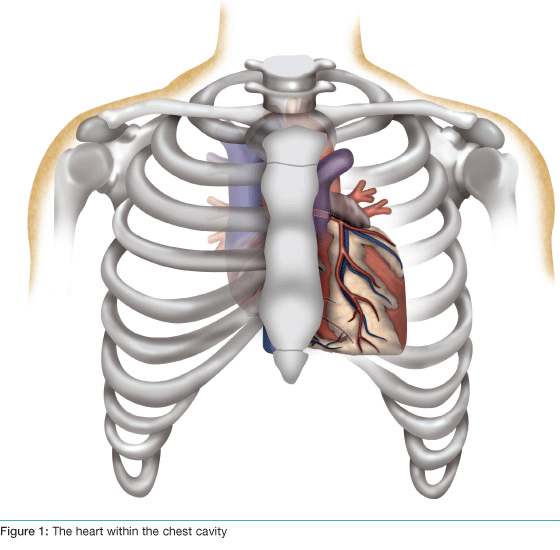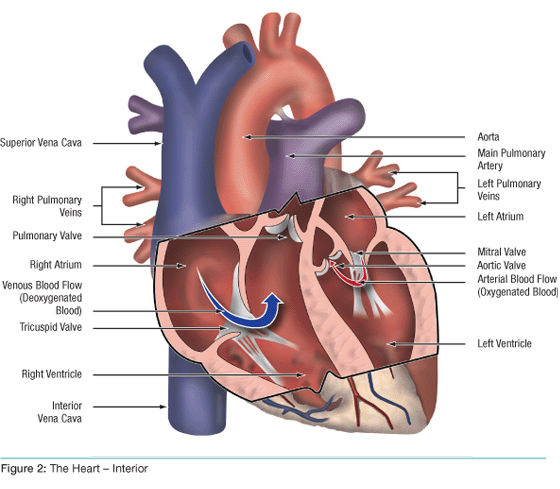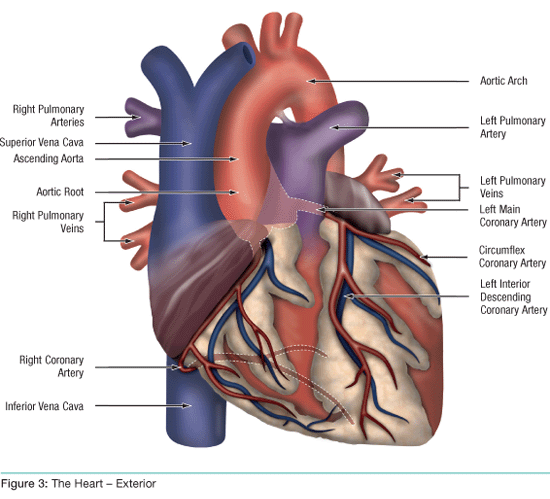The Heart:
What is Does and How it Works
The heart is a hollow, muscular organ located between the lungs and
underneath the breastbone. A muscular wall divides the heart into two
sides – the right side and the left side. Each side has two chambers.
The two upper chambers of the heart are called the atria (see figure
1).
The atria are the filling chambers. They receive blood returning from
the body (right atrium) and the lungs (left atrium). The two lower chambers
are called the ventricles. These are the pumping chambers of the heart.
The right ventricle pumps blood to the lungs. The left ventricle pumps
blood to the rest of the body. The atria and the ventricles are separated
by valves, which allow the blood to flow through the heart in one direction
and prevent back flow of blood. The wall of the heart is made up of
three layers. The outer layer is called the epicardium. The middle layer
is the actual heart muscle and is called the myocardium. The inner layer
of the heart is called the endocardium. The heart is contained within
a sac called the pericardium.

The sole purpose of the heart is to pump blood to and from the rest
of the body. The right side of the heart pumps blood without oxygen
to the lungs where oxygen is picked up by the red blood cells. The blood
then returns to the left side of the heart from where it is pumped to
the organs and muscles of the body, including the heart itself. (Figure
2).

In order to propel the blood, the heart must contract and relax some
60 to 100 times every minute. Exercise requires the heart to work harder.
It does this by an increase in the heart rate and an increase in the
amount of blood pumped from the heart with every heartbeat. In order
for the heart muscle to continuously pump, it must be well supplied
with oxygen-rich blood. The heart supplies itself with this blood first,
before sending blood to the rest of the body. The heart muscle is supplied
with blood through the coronary arteries, the heart’s own blood
vessels (See Figure 3 for a picture of the right and left coronary arteries
and how they supply the heart with blood).

|


